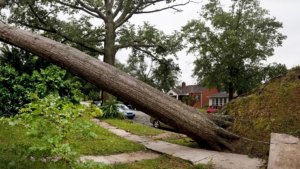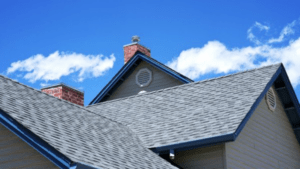In the unique climate of Utah, where residents experience both scorching summers and heavy snowfall in the winter, maintaining the longevity of your roof is complicated . The extreme weather conditions can take a toll on your roof, causing wear and tear that may shorten its lifespan. By implementing proper maintenance and proactive measures, as homeowners in Utah, you can effectively extend the life of your roof and protect your property from potential damage.
Regular Roof Inspections

Conducting regular roof inspections is vital to identify potential issues early and extend the lifespan of your roofing system. Homeowners and property managers should schedule these evaluations at least twice a year, ideally during the spring and fall, to prepare for the harsher summer and winter weather. A professional roofing inspector will look for signs of wear and tear, such as cracked, curled, or missing shingles, damaged flashing, and compromised seals around vents and chimneys.
In addition to weather-related deterioration, inspectors will assess any impact from debris or overhanging tree limbs, which can scrape or puncture the roofing material. They’ll check for signs of moss, algae, or fungal growth, which can compromise the integrity of the roof if left unchecked. Proper drainage is another key aspect of the inspection, ensuring that gutters and downspouts are free from blockages and efficiently directing water away from the roof and foundation of the property.
Immediate Leak Repairs
Following regular roof inspections, addressing leaks immediately when they are discovered is essential for maintaining the structural integrity of your roof. Leaks, no matter how small, can lead to significant damage over time, including weakened structural support, mold growth, and damaged insulation. It is vital to take prompt and effective action to mitigate these risks.
When a leak is identified, the first step is to determine the source, which can often be more extensive than the visible symptoms suggest. Engaging a professional roofing contractor to assess the leak is advisable, as they have the expertise to navigate the complexities of roof systems and pinpoint the exact origin. Once the source is identified, repairs should be carried out using high-quality materials that match the existing roof composition to ensure a seamless fix that prevents future leaks.
Document all repairs for warranty purposes and future reference. Keep records of the nature of the leak, the repair process, and any maintenance performed. This documentation can be invaluable for ongoing roof maintenance and for any claims against warranty. Remember, proactive and immediate action will not only extend the life of your roof but also protect the overall safety and integrity of your home.
Wind Damage in Utah
The state’s varying climate, particularly in areas such as Salt Lake City and Ogden, can experience high winds that pose a serious threat to the structural integrity of roofs. Wind damage can lead to costly repairs or even the need for a full roof replacement, impacting homeowners financially. A damaged roof can also compromise the safety and security of a home, leaving it vulnerable to leaks, mold, and other issues.
One effective way to safeguard roofs is by ensuring proper installation and maintenance of the roof covering, including shingles, tiles, or metal panels. It is important to use high-quality materials and secure them properly to prevent them from being lifted or torn off during strong winds. Installing hurricane straps or clips to secure the roof to the walls of the structure can provide added reinforcement against wind uplift. Trimming overhanging tree branches and securing loose outdoor objects can also help minimize the risk of debris causing damage to the roof during a storm.
ensuring proper installation and maintenance of the roof covering, including shingles, tiles, or metal panels. It is important to use high-quality materials and secure them properly to prevent them from being lifted or torn off during strong winds. Installing hurricane straps or clips to secure the roof to the walls of the structure can provide added reinforcement against wind uplift. Trimming overhanging tree branches and securing loose outdoor objects can also help minimize the risk of debris causing damage to the roof during a storm.
Proper Ventilation and Insulation
Guaranteeing proper ventilation and insulation is crucial to extending the lifespan and enhancing the performance of your roof. Adequate ventilation helps regulate the temperature and moisture levels in the attic, which protects against damage such as rot, mold, and ice dams. Appropriate insulation complements this by maintaining a consistent interior climate, reducing the strain on your heating and cooling systems, and preventing heat loss.
Here are three practical steps to make sure your roof has proper ventilation and insulation:
- Assess Ventilation Needs: Every roof is unique, so it’s important to calculate the specific ventilation requirements based on your attic space and local climate. This often involves installing vents at the peaks and eaves of your roof to promote a continuous airflow.
- Install Quality Insulation: Choose insulation with suitable R-values for your climate zone to optimize energy efficiency and roof protection. Ensure that it is uniformly applied without gaps, covering all corners and crevices of your attic space.
- Regular Inspections and Maintenance: Periodically check the condition of your roof’s ventilation and insulation. Look for signs of blockage in vents, degradation or displacement of insulation materials, and address these issues promptly to maintain peak roof health.
Clean Gutters and Downspouts
Regular maintenance of gutters and downspouts prevents water damage from wreaking havoc on worn and older roofes. Guaranteeing that these elements are free from debris such as leaves, twigs, and other obstructions helps in the efficient flow of water away from your roof and house foundation. We recommend cleaning your gutters at least twice a year, typically in the spring and fall, to avoid clogs that can lead to water backing up and seeping under roof shingles or siding.
When cleaning gutters, use a sturdy ladder, wear gloves for protection, and consider using a small plastic scoop to remove gunk. Flush the gutters with water from a garden hose to check for proper flow and to ensure that the downspouts are not blocked. If water doesn’t flow freely, downspouts may need to be disassembled and cleaned more thoroughly.
While cleaning, inspect for signs of wear such as holes, rust, or separations in the gutters and downspouts. Small holes can be patched with roofing cement, while larger issues may require parts to be replaced. Regular checks and timely maintenance of your roof’s drainage system are critical safety measures that protect your home’s structure and enhance roof longevity.
Professional Roof Maintenance
Scheduling annual inspections with a certified roofing professional can identify potential issues before they lead to major repairs. Regular maintenance conducted by experts not only guarantees the safety and stability of your roof but also extends its lifespan, saving you from costly replacements down the line.
Professional roof maintenance should focus on several key areas:
- Inspection of Material Integrity: This includes checking for cracked, missing, or damaged shingles, signs of wear on the flashing, and any other structural elements.
- Gutter and Downspout Cleaning: Professionals clear out any debris that may block water flow, preventing water accumulation that can lead to roof damage.
- Detection of Water Damage: Early detection and repair of leaks and moisture issues are essential to prevent mold, rot, and structural damage.
A1 Roofing stands out as the top choice for all your roofing inspection and repair needs. Our team of trained professionals is armed with the essential tools and expertise required to perform meticulous inspections and repairs. With our keen eye for detail, we are able to identify issues that might go unnoticed by others. We offer invaluable guidance on maintaining your roof to guarantee its safety and durability. Partnering with A1 Roofing for a regular maintenance program is a proactive step that not only reduces risks but also optimizes the performance of your roof.
